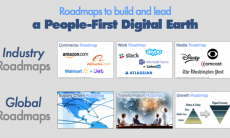Human behaviors are multifarious and myriad in nature. It is a challenging task to envisage and learn the human behavior from daily routine activities. The profusion of wireless enabled mobile devices in daily life routine and advancement in pervasive computing has opened new horizons to analyze and model the contextual information.
Both the GSM and location data itself do not reveal much information about the behavior of the users. Therefore, the challenge is to find out whether such data can infer human behavior to understand and aid the unusual activities and routines of low entropy people, such as the elderly and those in the early stages of dementia.
There are four different steps in this framework. In the first step, the contextual data is first classified into different locations to obtain the movement patterns of the users. In the second and third steps, a probability matrix and training data is obtained respectively, depending upon the user’s movement on daily and hourly basis. In the fourth step, a decision engine, i.e. Neural Network (NN) or Decision Trees (DT), is used to detect the behavior of the low entropy user.
Results have shown that cell tower ID data reveals behavior of the user on a high level scale. For example, movement patterns in GSM cells do not help to identify any lower level activities such as attending lectures, traveling in a bus, or relaxing late in the afternoon. Whereas location or usage data gives us more information about the lower level activities depending on the social relations and close proximity of other users. Detection and prediction of human behavior from daily life activities is a challenging task but mobile usage can be used as a compass to this effort.
People can have both regular and varying daily life routines that make it a burning topic nowadays in social research circles. Modelling human behavior, such as individual routines from proximity data and social relations with gathered data of daily life activity patterns is an emerging realm in Ubiquitous Computing. Computers are becoming more and more pervasive and are embedded in everyday objects, such as cameras, music players, cars, clothing etc.
For brands looking to capitalize on smartphones’ closeness to consumers, the numbers indicate that consumers aren’t fundamentally opposed to mobile interactions with brands (and, in many cases, they find these interactions useful)—but consumers need to be apprised of why they should opt in to receive messages and what the end result will be.
It has been proven that 95% of those who opt into email messages from brands find these messages somewhat or very useful. Email notifications are effective in converting to sales—more than 8 out of 10 consumers who signed up for emails from a brand over the past six months made a purchase based on what they received. Of those who don’t use email notifications, 43% find them disruptive. Although adoption by consumers is low (54% have actually opted in to receive text messages from a brand), text messaging is seen as somewhat or very useful by 91% of users who actually subscribe to a brand’s texts. Of those who don’t, 52% said it’s disruptive; 41% said the content wasn’t meaningful. As the numbers indicate, a large percentage of consumers are cautious (and understandably so) to share location information and personal details with brands.
Why would a consumer want to divulge neither personal details if the brand hasn’t explained how that information will be used, nor the personal benefits for that consumer? Whether it’s push notifications, text messaging, emails, or something else, brands must provide overt explanations of forthcoming value, respect time and frequency of consumers’ communication preferences, and ultimately be honest about what consumers will receive in return for messaging privileges.
At this point it is really important to make clear that mobile is not about media, it is, as we said, about behavior. Consumers use their mobile devices for connectivity and content. People are looking for improvements in how they consume and experience mobile content, but many mobile experiences are still lagging far behind. Brands think that if they build a nice app, or declare that they have “Mobile first” they seem innovative or advanced but in reality they do nothing to not only provide a complete experience to their people, but most of the time they don’t care, for it is no matter if they do spend a fortune on a mobile strategy.
Therefore a bad experience drives people to go after something much easier to find, navigate, and understand. Mobile has succeeded in redefining our daily routine, our perception about time (we can estimate much easier how long it will take us to go somewhere, to spend time while waiting in a long queue, or during a long flight). In addition to this it becomes clear that all the data generated by mobile is not about trying to create models but to describe places, energy, trends, and behaviors attached to places. People tend to get influenced and make decisions much faster because of mobile. Context becomes more complicated than ever for brands and the only device they have as compass to understand is peoples’ mobile phones.
People have preferences about which device they use to access a certain online property; for example, consumers use tablets much more often to access Twitter (76% of Twitter visits occurred on tablets), YouTube (73% of YouTube visits occurred on tablets), Amazon (69% of Amazon visits occurred on tablets), CNN, and Facebook (both CNN and Facebook were accessed on tablets 67% of the time). The only three properties that our tracked consumers accessed more on smartphones were Pinterest (83% of visits occurred on smartphones), weather (82% of visits occurred on smartphones), and Yahoo (55% of visits occurred on smartphones).
At the end of the day, the smartphone is the mobile device; consumers consider it a central part of their lives. Meanwhile, half of them also say that sites optimised for that central device don’t provide enough content. Brands have to focus on what mobility really looks like—a scanned coupon or QR code, a location-based push message, or a cross-channel offer has nothing to do with what mobility looks, feels, and is about. Customers are looking for brands that lead the way, as evidenced by the majority of them who say it’s somewhat or very important that brands they interact with are seen as technology leaders.




